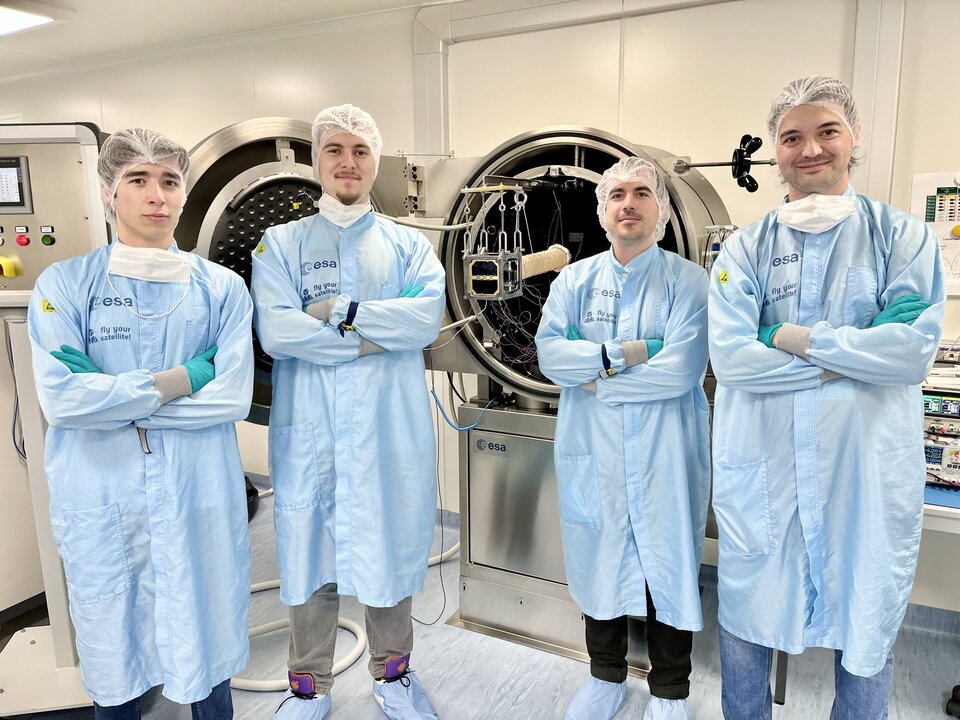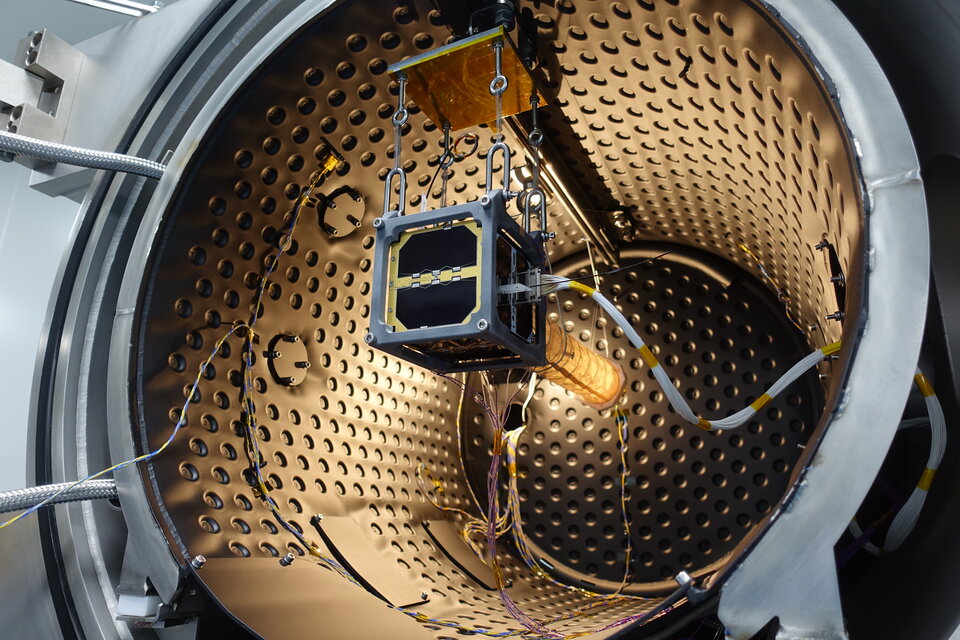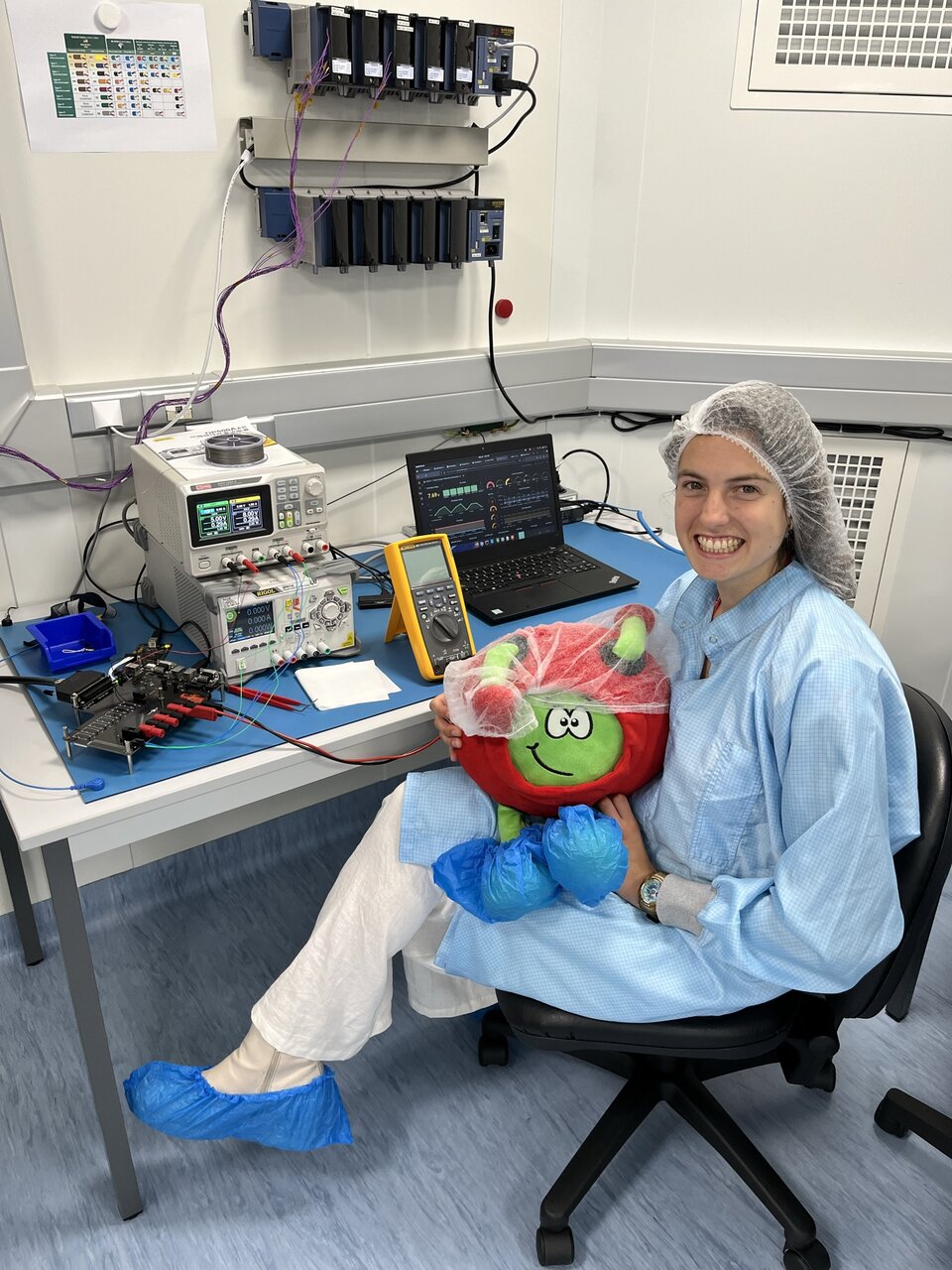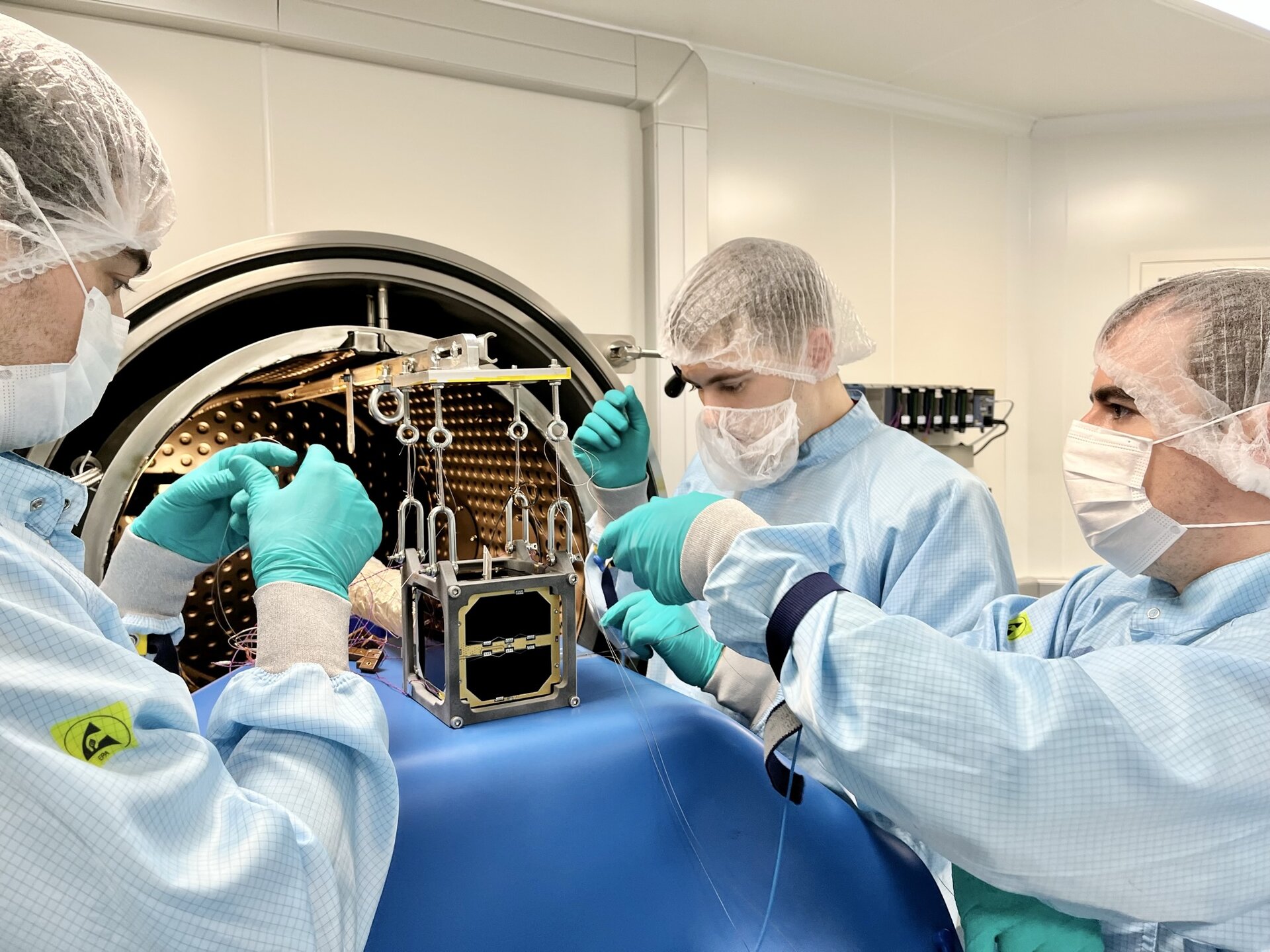3Cat-4 CubeSat passes Thermal Vacuum Test Campaign
The 3Cat-4 CubeSat team, participating in the second cycle of the ESA Academy’s Fly Your Satellite! programme, recently completed a crucial test campaign to assess their CubeSat's performance under vacuum and extreme temperature conditions. The Thermal Vacuum (TVac) test, conducted at the CubeSat Support Facility (CSF) in ESEC, Belgium, from May 15th to June 2nd, 2023, marked a significant milestone for the team from the Nanosat Lab at the Universitat Politècnica de Catalunya.

The 3Cat-4 mission focuses on Earth observation using cutting-edge technology, in addition to the educational goals. As a 1U CubeSat, it features a Flexible Microwave payload that employs GNSS Reflectometry and L-band microwave radiometry. Additionally, it carries a receiver for Automatic Identification Services (AIS) messages used by vessel traffic services.
After the mechanical qualification of the CubeSat that took place in October 2022, also at the CubeSat Support Facility, the team continued to verify the functional design of their CubeSat and simulate orbital operations during an extensive Mission Test.
The Thermal Vacuum test consisted of a series of cycles in which the satellite goes from freezing cold to scorching hot temperatures, while in vacuum conditions. This test mimics the satellite’s environment in-orbit when the CubeSat transits from being illuminated by the sun, to the eclipse period when the sun is hidden by the Earth. During these extreme conditions, the team must then ensure that the platform and payload continue to function nominally, proving that they will survive the harsh environment. The student team leader stated, "Bringing the satellite to its operational limits helped us identifying issues that would have not been found otherwise, and that could have been detrimental in orbit."

This test was conducted in the CSF thermal-vacuum chamber capable of recreating the environmental conditions of outer space. This facility creates a high level of vacuum and controls the temperature of the items under test through radiation, exactly how heat transfer occurs in Low Earth Orbit, this CubeSat’s end destination.
ESA Education’s support extended from test definition and preparation activities to reviewing procedures and guiding the team during the test campaign, which aims not only at maximising educational return, but also to increase the chances of overall mission success. One of the younger students commented, "The test campaign has been a learning experience, both technical and personal."
The development of the 3Cat-4 CubeSat has been a remarkable journey for the student team. Many of the subsystems were developed in-house, and the team took proactive steps to reduce project risks. They conducted individual environmental qualification tests for all the in-house developed subsystems early in the development process. This approach minimized risks and provided significant learning opportunities for the students, allowing them to build expertise in hardware and software development for space systems.

The recent test campaign represented a crucial milestone for the 3Cat-4 team. It was the first time all subsystems were exposed together to the demanding space environment. "A TVAC test is not only an environmental test, but also a full functional test that allows to see things not seen before", another student remarked. With systematic procedures, and powerful data visualisation tools, the team excelled in identifying the root cause of the anomalies that were encountered from time to time.
After many days of rigorous testing, the team was pleased to confirm that their CubeSat performed well under extreme temperature conditions. While a few software bugs surfaced during the campaign, the team is actively addressing them. As one student put it, “A successful campaign’s outcome is not an absence of anomalies, but the ability to detect and understand them to formulate a solution”.
With this test successfully completed, the 3Cat-4 CubeSat team is now closer than ever to being declared ready for launch. Back at their University, the students will start preparing for the Flight Acceptance Review, the last ESA review before being granted their “Ticket To Orbit”.
To keep up to-to-date with developments, please visit the Fly Your Satellite! website.


